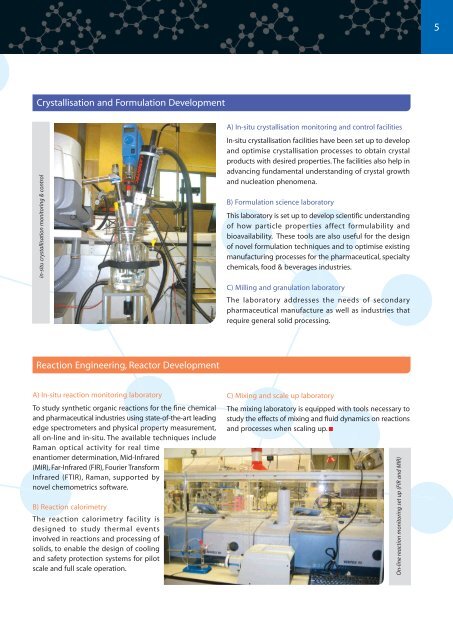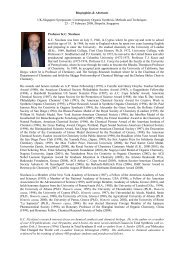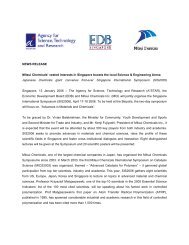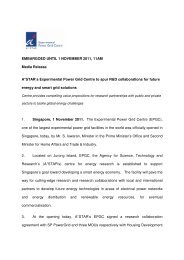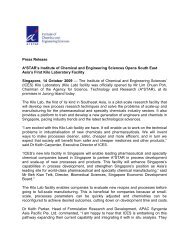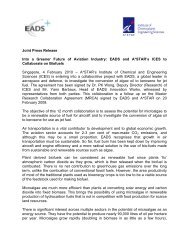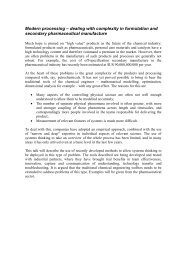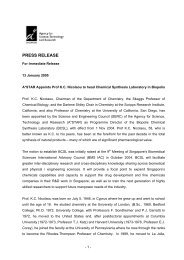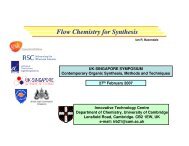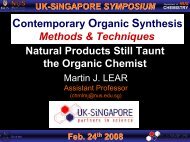INSITU Oct 2006 - Vol 2 - Institute of Chemical & Engineering ...
INSITU Oct 2006 - Vol 2 - Institute of Chemical & Engineering ...
INSITU Oct 2006 - Vol 2 - Institute of Chemical & Engineering ...
You also want an ePaper? Increase the reach of your titles
YUMPU automatically turns print PDFs into web optimized ePapers that Google loves.
5<br />
Crystallisation and Formulation Facilities Development<br />
and<br />
Infrastructure<br />
in-situ crystallisation monitoring & control<br />
Applications<br />
A) In-situ crystallisation monitoring and control facilities<br />
In-situ crystallisation facilities have been set up to develop<br />
and optimise crystallisation processes to obtain crystal<br />
products with desired properties. The facilities also help in<br />
advancing fundamental understanding <strong>of</strong> crystal growth<br />
and nucleation phenomena.<br />
B) Formulation science laboratory<br />
This laboratory is set up to develop scientific understanding<br />
<strong>of</strong> how particle properties affect formulability and<br />
bioavailability. These tools are also useful for the design<br />
<strong>of</strong> novel formulation techniques and to optimise existing<br />
manufacturing processes for the pharmaceutical, specialty<br />
chemicals, food & beverages industries.<br />
C) Milling and granulation laboratory<br />
The laboratory addresses the needs <strong>of</strong> secondary<br />
pharmaceutical manufacture as well as industries that<br />
require general solid processing.<br />
Reaction <strong>Engineering</strong>, Reactor Development<br />
A) In-situ reaction monitoring laboratory<br />
To study synthetic organic reactions for the fine chemical<br />
and pharmaceutical industries using state-<strong>of</strong>-the-art leading<br />
edge spectrometers and physical property measurement,<br />
all on-line and in-situ. The available techniques include<br />
Raman optical activity for real time<br />
enantiomer determination, Mid-Infrared<br />
(MIR), Far-Infrared (FIR), Fourier Transform<br />
Infrared (FTIR), Raman, supported by<br />
novel chemometrics s<strong>of</strong>tware.<br />
B) Reaction calorimetry<br />
The reaction calorimetry facility is<br />
designed to study thermal events<br />
involved in reactions and processing <strong>of</strong><br />
solids, to enable the design <strong>of</strong> cooling<br />
and safety protection systems for pilot<br />
scale and full scale operation.<br />
C) Mixing and scale up laboratory<br />
The mixing laboratory is equipped with tools necessary to<br />
study the effects <strong>of</strong> mixing and fluid dynamics on reactions<br />
and processes when scaling up.<br />
On-line reaction monitoring set up (FIR and MIR)


